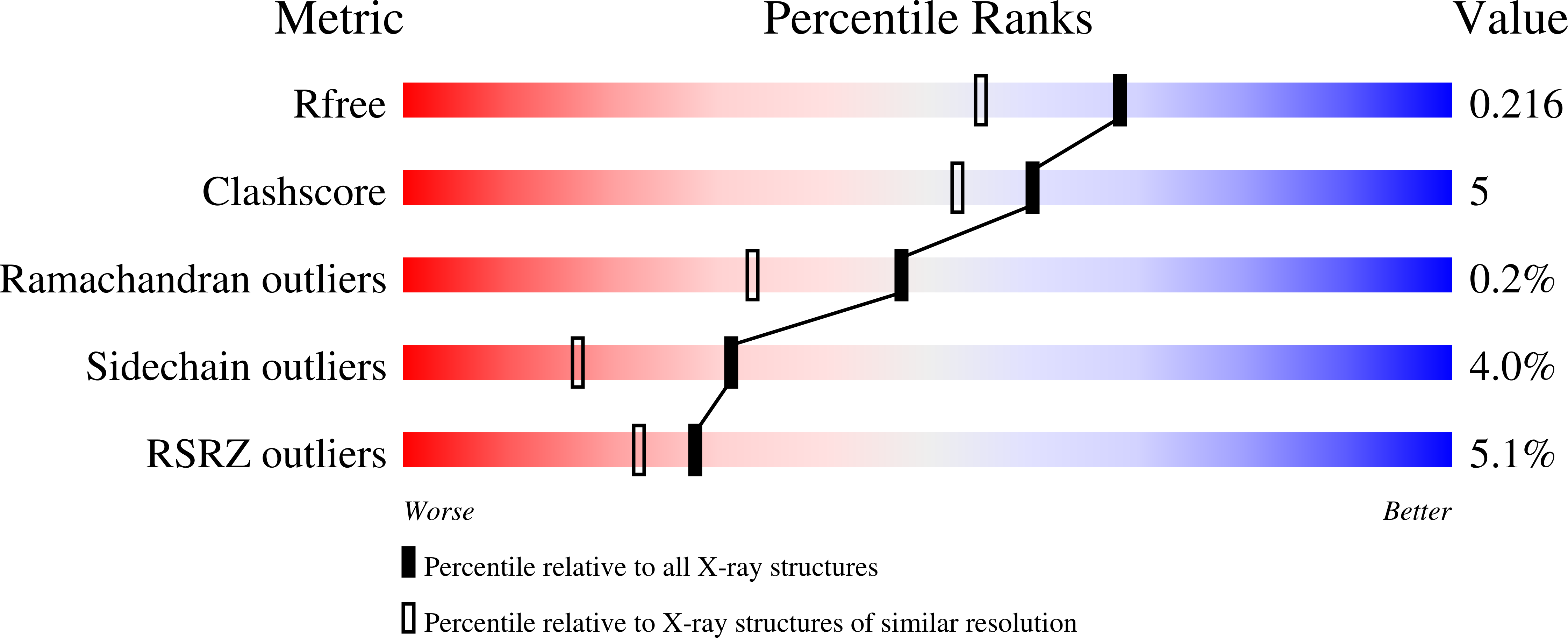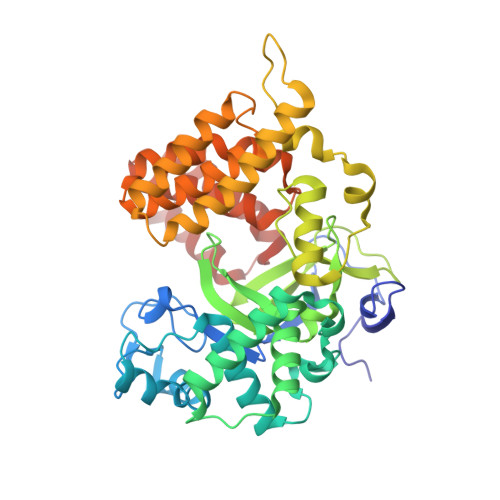Crystal structures of histone and p53 methyltransferase SmyD2 reveal a conformational flexibility of the autoinhibitory C-terminal domain.
Jiang, Y., Sirinupong, N., Brunzelle, J., Yang, Z.(2011) PLoS One 6: e21640-e21640
- PubMed: 21738746
- DOI: https://doi.org/10.1371/journal.pone.0021640
- Primary Citation of Related Structures:
3QWV, 3QWW - PubMed Abstract:
SmyD2 belongs to a new class of chromatin regulators that control gene expression in heart development and tumorigenesis. Besides methylation of histone H3 K4, SmyD2 can methylate non-histone targets including p53 and the retinoblastoma tumor suppressor. The methyltransferase activity of SmyD proteins has been proposed to be regulated by autoinhibition via the intra- and interdomain bending of the conserved C-terminal domain (CTD). However, there has been no direct evidence of a conformational change in the CTD. Here, we report two crystal structures of SmyD2 bound either to the cofactor product S-adenosylhomocysteine or to the inhibitor sinefungin. SmyD2 has a two-lobed structure with the active site located at the bottom of a deep crevice formed between the CTD and the catalytic domain. By extensive engagement with the methyltransferase domain, the CTD stabilizes the autoinhibited conformation of SmyD2 and restricts access to the catalytic site. Unexpectedly, despite that the two SmyD2 structures are highly superimposable, significant differences are observed in the first two helices of the CTDs: the two helices bend outwards and move away from the catalytic domain to generate a less closed conformation in the sinefungin-bound structure. Although the overall fold of the individual domains is structurally conserved among SmyD proteins, SmyD2 appear to be a conformational "intermediate" between a close form of SmyD3 and an open form of SmyD1. In addition, the structures reveal that the CTD is structurally similar to tetratricopeptide repeats (TPR), a motif through which many cochaperones bind to the heat shock protein Hsp90. Our results thus provide the first evidence for the intradomain flexibility of the TPR-like CTD, which may be important for the activation of SmyD proteins by Hsp90.
Organizational Affiliation:
Department of Biochemistry and Molecular Biology, Wayne State University School of Medicine, Detroit, Michigan, United States of America.


















